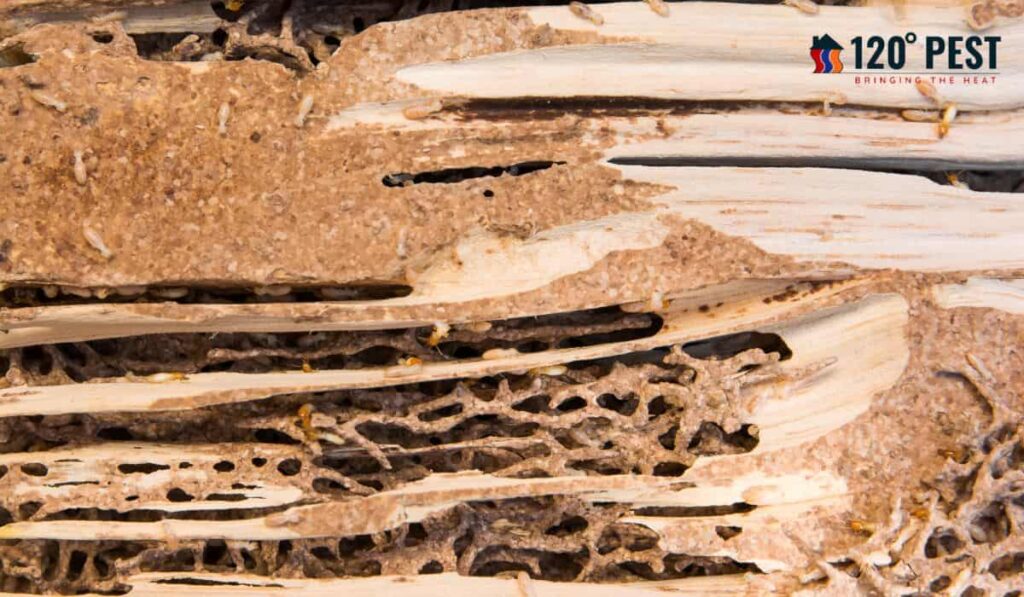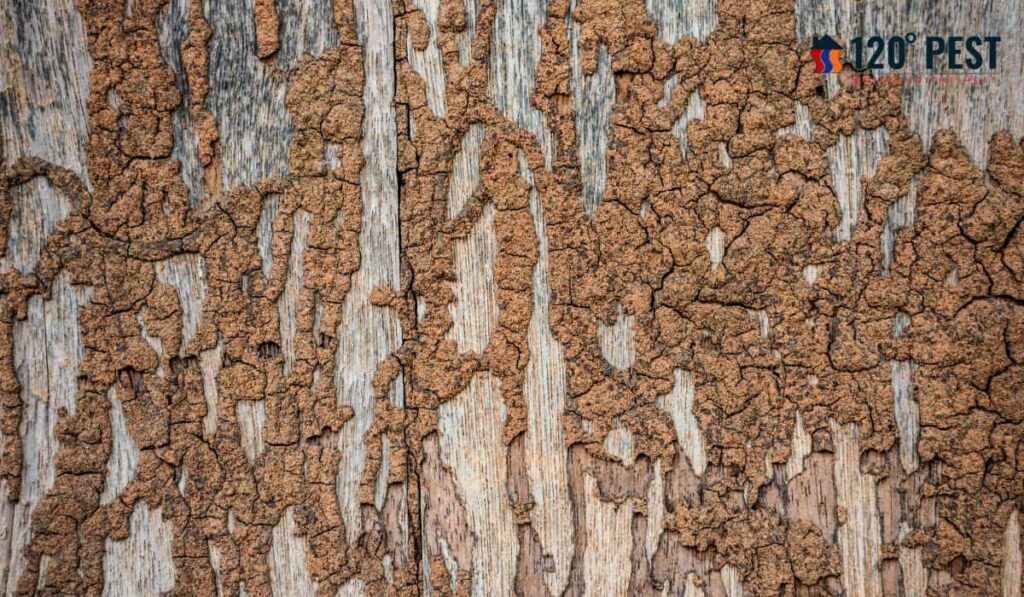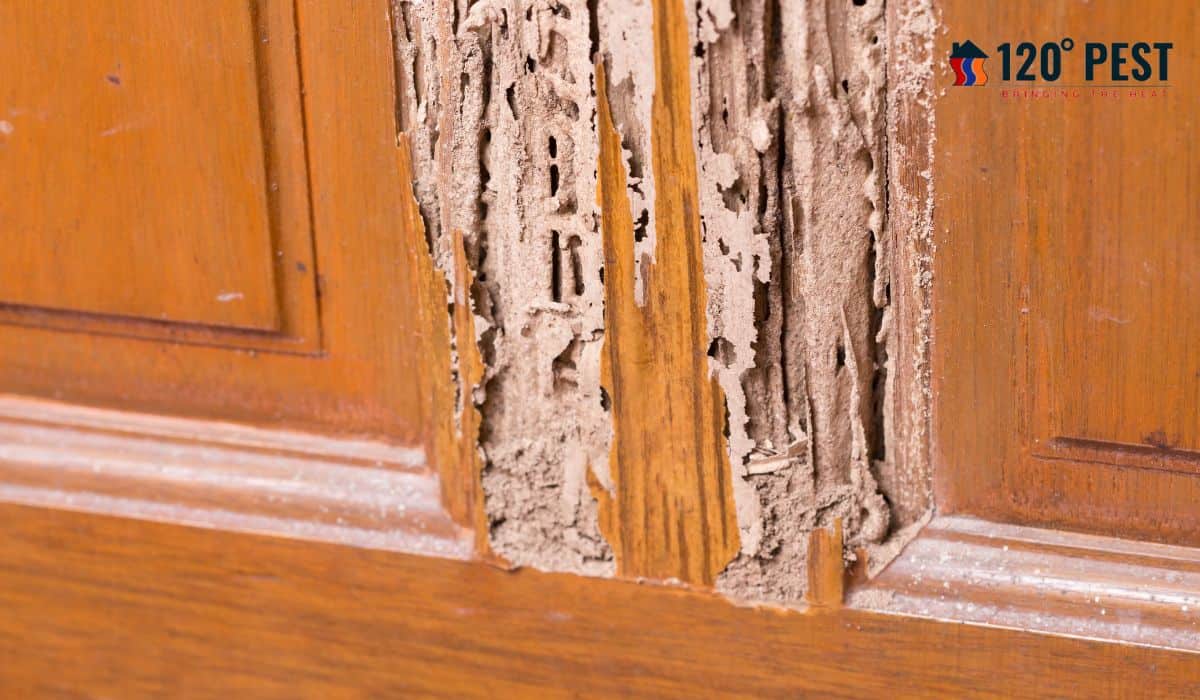Termites, the tiny terrors of the insect world, may seem inconspicuous at first glance, but their potential to wreak havoc on your home is anything but small.
In this comprehensive guide, we will delve into the world of termite control, exploring the various methods and strategies to protect your home from these silent invaders.
We’ve covered everything from understanding termite behavior to implementing preventive measures and effective treatments.
Understanding Termites
The Silent Threat: An Introduction to Termites
Termites, often called “silent destroyers,” are small, social insects that feed on cellulose-based materials, primarily wood.
They thrive in dark, hidden places, making them difficult to detect until significant damage has already been done.
Termite Species: Know Your Enemy
There are three main types of termites: subterranean, dry wood, and damp wood.
Understanding the differences between them is crucial for effective termite control.
Signs of Termite Infestation
Identifying the Red Flags
The first step in protecting your home is to spot the early signs of a termite infestation.
We’ll discuss common indicators such as mud tubes, discarded wings, and hollow-sounding wood.
When to Call for Help
Knowing when to seek professional assistance is vital.
We’ll guide you on when it’s time to contact a pest control expert.
Preventive Measures
Protecting Your Home
Prevention is the key to termite control.
Learn how to make your home less attractive to termites by addressing moisture issues, removing wood-to-soil contact, and maintaining a termite barrier.
Regular Inspections
Regular termite inspections can catch problems early on.

Discover how often you should inspect your home and what to look for during these examinations.
Effective Termite Control
Chemical Treatments
Chemical treatments like termiticides can be highly effective.
We’ll discuss the different types of termiticides and their application methods.
Baiting Systems
Baiting systems have gained popularity as an eco-friendly termite control method.
Please find out how these systems work and when to consider them.
Fumigation
In severe infestations, fumigation may be necessary.
We’ll explain the process and safety precautions associated with tenting your home.
DIY vs. Professional Help
The Pros and Cons
Weighing the pros and cons of tackling a termite problem versus hiring professionals is crucial.
We’ll provide insights to help you make an informed decision.
Conclusion
Termites threaten your home’s structural integrity, but you can protect your investment with the proper knowledge and preventive measures.
Early detection and proactive termite control are your best defenses against these silent invaders.
FAQs
How do I know if I have a termite problem?
Look for signs like mud tubes, hollow wood, or discarded wings. If in doubt, consult a pest control expert.
Can I prevent termites on my own?
You can take preventive measures, but professional inspections and treatment may be necessary for peace of mind.
What’s the most effective termite treatment?
The effectiveness of treatment depends on the extent of infestation. Chemical treatments, baiting systems, and fumigation are all options.

How often should I inspect my home for termites?
Annual inspections are recommended, but more frequent checks are advisable if you live in a termite-prone area.
Does homeowners’ insurance cover termite damage?
Typically, standard homeowners’ insurance does not cover termite damage. It’s essential to have a separate termite protection plan in place.
Are there any natural remedies to repel termites?
While natural remedies like orange oil and nematodes are touted as termite repellents, their effectiveness varies. It’s best to consult a professional for a comprehensive solution.
Do termites cause health problems for humans?
Termites do not pose direct health risks to humans. However, their presence can lead to mold growth, affecting indoor air quality. Additionally, professionals should handle termite treatments to avoid exposure to chemicals.
What should I do if I find a termite swarm in my home?
Termite swarms indicate a mature colony nearby. Contact a pest control expert immediately to assess the situation and recommend appropriate action.
Can termites infest furniture and wooden belongings inside the house?
Yes, termites can infest wooden furniture and belongings. Regularly inspecting your home’s structure and contents is essential to prevent damage.
How long does it take to get rid of termites once treatment begins?
The time required to eliminate termites depends on the severity of the infestation, the chosen treatment method, and environmental factors. It can range from a few weeks to several months, with follow-up inspections to ensure complete eradication.





Your article helped me a lot, is there any more related content? Thanks!
pin up azerbaijan https://azerbaijancuisine.com/# pin up az?rbaycan
pin-up casino giris
pin-up kazino: pin-up oyunu – pin-up
medication from mexico pharmacy: cmq mexican pharmacy online – pharmacies in mexico that ship to usa
mexico drug stores pharmacies
https://cmqpharma.online/# mexican border pharmacies shipping to usa
purple pharmacy mexico price list
canadian pharmacy review best canadian pharmacy canadian pharmacy cheap
https://canadapharmast.com/# cheap canadian pharmacy online
indian pharmacies safe: pharmacy website india – reputable indian online pharmacy
buying prescription drugs in mexico: mexican rx online – mexican rx online
medication from mexico pharmacy best online pharmacies in mexico medication from mexico pharmacy
canadian pharmacy ltd: canadian world pharmacy – canadian pharmacy 24
п»їlegitimate online pharmacies india: indian pharmacy online – top 10 pharmacies in india
reputable indian online pharmacy: india online pharmacy – indian pharmacy online
https://canadapharmast.online/# canadian discount pharmacy
mexican drugstore online mexican mail order pharmacies reputable mexican pharmacies online
buying from online mexican pharmacy: medicine in mexico pharmacies – medication from mexico pharmacy
mexican rx online: mexican border pharmacies shipping to usa – buying from online mexican pharmacy
pharmacy website india: indian pharmacy online – online shopping pharmacy india
https://indiapharmast.com/# best online pharmacy india
indianpharmacy com top online pharmacy india indian pharmacies safe
pharmacies in mexico that ship to usa: mexican mail order pharmacies – mexican online pharmacies prescription drugs
top 10 online pharmacy in india: top 10 online pharmacy in india – pharmacy website india
canadian pharmacy online: vipps approved canadian online pharmacy – canadian discount pharmacy
doxycycline 40 mg generic coupon: doxycycline 50mg – order doxycycline 100mg
http://ciprodelivery.pro/# buy cipro cheap
http://amoxildelivery.pro/# amoxicillin 775 mg
cost of clomid pills: can i order generic clomid price – get cheap clomid without a prescription
http://doxycyclinedelivery.pro/# doxycycline prescription online
п»їpaxlovid: paxlovid cost without insurance – paxlovid price
https://clomiddelivery.pro/# where can i get clomid without rx
https://ciprodelivery.pro/# ciprofloxacin
amoxicillin 875 mg tablet: amoxicillin generic – amoxicillin 50 mg tablets
http://amoxildelivery.pro/# amoxicillin where to get
https://doxycyclinedelivery.pro/# generic doxycycline 200 mg
ciprofloxacin 500mg buy online: ciprofloxacin – cipro pharmacy
https://ciprodelivery.pro/# cipro for sale
where can you get doxycycline: doxycycline 3142 – how to get doxycycline
http://clomiddelivery.pro/# can you buy cheap clomid prices
where can i buy clomid prices: how to buy cheap clomid without prescription – cheap clomid without prescription